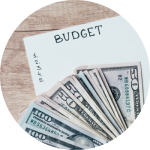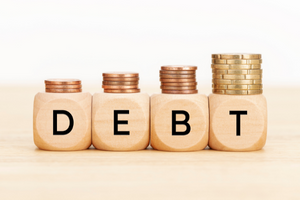F. Handling Debt Left Behind By Family Members
If you are trying to handle the debts left behind by a family member, it is important to understand how rules might apply, depending on the type of debt.
When a person dies the assets that they leave behind are called their “estate.” The estate includes money, property, and personal belongings. The estate is managed by an “executor.” The executor pays any debts using money and assets in the estate through a court probate process. Creditors only have a certain amount of time to submit claims (varies by state). The executor reviews claims and pays any valid bills.
If there are still assets left, then the assets are paid to the beneficiaries. If there are more debts than assets, some debts are prioritized over others. State law determines which creditors receive priority over others; often, taxes owed to the IRS, taxes owed to state governments, unpaid child support or alimony, and medical debt are prioritized over credit card debt.
Family members may receive calls from creditors and collection agencies demanding payment for debts owed, even if they are owed solely by the deceased. However, creditors may not contact family members after the executor posts a notice of the death in a publication, like a local newspaper, which tells creditors who to contact about any debts.
Executors or family members should organize the person’s accounts, and:
- Prevent further use of the credit cards (even by family members)
- Get multiple copies of death certificates to send to credit card agencies and credit reporting bureaus to notify them
- Freeze the person’s credit report by contacting the three credit reporting bureaus (Equifax, Experian and TransUnion)
- Ask creditors for proof that their claim is valid before any money is paid. Avoid agreeing to payment plans or making any verbal agreements with creditors.
There are some situations in which family members may be responsible for paying the deceased person’s debts. For example:
- Joint Loans: Although family members cannot be held responsible for debts solely in the deceased person’s name, loans co-signed by family members can become their responsibility.
- Joint Credit Accounts: If the deceased person has a joint account with a family member, such as a spouse, the surviving account holder is responsible for any remaining debt.
- Spouses & State Law Exceptions: State laws may require spouses to pay particular types of debts, or require executors to pay outstanding bills using property owned jointly by the deceased person and their spouse.
- Community Property States: In community property states, surviving spouses may be required to use community property to pay the debts of deceased spouses. Community property states are: AZ, CA, ID, LA, NV, NM, TX, WA, and WI.
Most states protect certain assets for family members, such as:
- Retirement Plans and Insurance Policies: Usually, funds from retirement accounts, life insurance policies, or annuities are paid directly to named beneficiaries. However, some states set limits on the amount of funds beneficiaries can receive when the deceased has outstanding debts. Amounts payable to beneficiaries should be kept separately from funds from other sources until the estate is settled to safeguard survivors’ funds.
- Homesteads: Most states allow surviving spouses or family members to declare their primary residence as a homestead, which will not be subject to creditor claims. In some states, this protection is automatically applied, but in others it must be applied for. Mortgage or tax payments must still be made on the home in order for survivors to protect it.




